
The Fiery Heart of Nicaragua: Masaya Volcano
Discover Masaya Volcano, Nicaragua's fiery heart, and witness the stunning beauty and raw power of one of the most active volcanoes in Central America.
Masaya Volcano, located in the heart of Nicaragua, offers an awe-inspiring glimpse into the raw power of nature. One of the most active volcanoes in Central America, Masaya provides a dramatic and unforgettable experience for all who visit. Known locally as 'La Boca del Infierno' or 'The Mouth of Hell,' this natural wonder was once considered a portal to the underworld by indigenous people. Visitors to Masaya Volcano can explore the surrounding national park, which is filled with diverse flora and fauna. The highlight, of course, is the opportunity to peer into the crater and witness the glowing lava lake below. The unique landscape, with its rugged terrain and sulfurous fumes, creates an otherworldly atmosphere that is sure to leave a lasting impression. In addition to the volcanic activity, the park offers several hiking trails, scenic viewpoints, and a fascinating museum that provides insight into the geology and history of the area. Whether you're an adventurous traveler or simply looking to witness one of nature's most powerful phenomena, Masaya Volcano is a must-see destination.
Local tips in Masaya Volcano
- Visit early in the day to avoid the crowds and experience cooler temperatures.
- Wear sturdy shoes and bring plenty of water, as the terrain can be rough and the weather hot.
- Check the park's activity level before you go; access to the crater may be restricted during heightened volcanic activity.
- Consider a guided tour for a deeper understanding of the volcano's history and geology.
- Pack a mask or scarf to cover your nose and mouth; the sulfur fumes can be strong.
The Fiery Heart of Nicaragua: Masaya Volcano
Masaya Volcano, located in the heart of Nicaragua, offers an awe-inspiring glimpse into the raw power of nature. One of the most active volcanoes in Central America, Masaya provides a dramatic and unforgettable experience for all who visit. Known locally as 'La Boca del Infierno' or 'The Mouth of Hell,' this natural wonder was once considered a portal to the underworld by indigenous people. Visitors to Masaya Volcano can explore the surrounding national park, which is filled with diverse flora and fauna. The highlight, of course, is the opportunity to peer into the crater and witness the glowing lava lake below. The unique landscape, with its rugged terrain and sulfurous fumes, creates an otherworldly atmosphere that is sure to leave a lasting impression. In addition to the volcanic activity, the park offers several hiking trails, scenic viewpoints, and a fascinating museum that provides insight into the geology and history of the area. Whether you're an adventurous traveler or simply looking to witness one of nature's most powerful phenomena, Masaya Volcano is a must-see destination.
When is the best time to go to Masaya Volcano?
Iconic landmarks you can’t miss
Museo Volcán Masaya
Explore the captivating Museo Volcán Masaya, where geology meets culture in the heart of Nicaragua's volcanic landscape.

Parque Nacional Volcán Masaya
Explore the captivating natural beauty and volcanic wonders of Parque Nacional Volcán Masaya, a must-visit destination in Nicaragua.

Carretera a Parque Volcánico Masaya
Explore the majestic Parque Volcánico Masaya, where volcanic landscapes meet stunning views in the heart of Nicaragua.
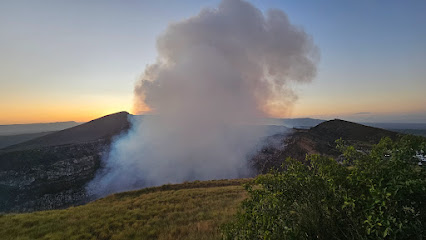
Masaya
Explore the breathtaking Masaya Volcano, a stunning natural wonder in Nicaragua known for its active lava and rich cultural heritage.

Volcan massaya
Experience the breathtaking beauty and geological wonders of Volcan Masaya, Nicaragua's stunning active volcano and national park.

Mirador al volcán Masaya y catarata
Discover the stunning vistas of Masaya Volcano and its enchanting waterfall at the Mirador al Volcán Masaya y Catarata, a true natural wonder in Nicaragua.

Unmissable attractions to see
Parquesaurio Nindirí
Discover the thrill of adventure and nature at Parquesaurio Nindirí, Nicaragua's premier theme park, perfect for families and thrill-seekers alike.

Parque Natural Divina Misericordia
Experience the tranquility of Parque Natural Divina Misericordia, a serene haven in Managua, Nicaragua, perfect for nature lovers and outdoor enthusiasts.

Malecon
Explore Malecon in Masaya, Nicaragua - a serene park offering lush landscapes, local culture, and stunning sunset views.

Parroquia San Jerónimo
Explore the architectural beauty and cultural significance of Parroquia San Jerónimo, a must-visit Catholic church in Masaya, Nicaragua.

Sendero Los Mangos
Explore Sendero Los Mangos: A stunning hiking area in Catarina, Nicaragua, perfect for nature lovers and adventure seekers.

El Corozal. Park
Experience the natural beauty and tranquility of El Corozal Park in Masaya, a perfect retreat for relaxation and family fun.

Antigua Estación de Ferrocarril
Explore the rich railway heritage of Nicaragua at Antigua Estación de Ferrocarril, a captivating history museum in the heart of Masaya.

El Ventarron - La Concepción Masaya
Explore the breathtaking natural beauty of El Ventarron, a serene nature preserve in La Concepción, Masaya, rich in wildlife and hiking opportunities.

El Boquete, Diriá
Explore the breathtaking natural beauty and vibrant culture of El Boquete, Dirián - a must-visit destination for every adventurous traveler.

Monumento De La Reforma
Discover the beauty and history of Monumento De La Reforma, a serene park in Masaya, Nicaragua, filled with lush landscapes and cultural significance.

Puente Ines
Experience the tranquility of Puente Ines, a beautiful park in Masaya, ideal for nature lovers and those seeking a peaceful retreat.

Mirador del Lago de Masaya
Discover stunning views and serene surroundings at Mirador del Lago de Masaya, a picturesque park in Nicaragua perfect for nature lovers and photographers.

Nicaragua Butterfly Reserve
Explore the vibrant beauty of the Nicaragua Butterfly Reserve, a sanctuary showcasing the mesmerizing lives of butterflies in a serene natural setting.
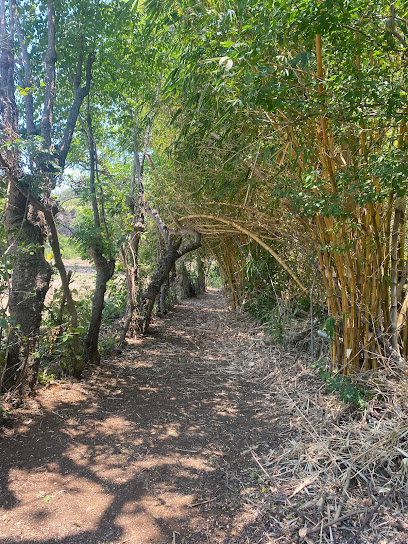
Mariposario de Pacaya
Explore the breathtaking Mariposario de Pacaya, a vibrant butterfly sanctuary in Nicaragua, where nature's beauty unfolds in every fluttering wing.

Zona costera Lago de Masaya
Experience the breathtaking beauty and rich biodiversity of Zona Costera Lago de Masaya, a must-visit tourist attraction in Nicaragua.

Essential places to dine
Baho Vilma
Discover authentic Nicaraguan flavors at Baho Vilma in Masaya - home of the best Baho dish you'll ever taste!

Las Jicarita’s
Discover authentic Nicaraguan cuisine at Las Jicarita's - where every dish tells a story of tradition and flavor.

El Mercado Viejo Craft Market
Discover handcrafted treasures and authentic flavors at El Mercado Viejo Craft Market in Masaya, Nicaragua - a true cultural gem.

Restaurante Kaffe Café
Discover the culinary charm of Masaya at Restaurante Kaffe Café, where local flavors meet international cuisine in a cozy atmosphere.

Casona vieja
Experience authentic Nicaraguan flavors at Casona Vieja in Masaya – where every dish tells a story.

Restaurante Verdi #2
Discover flavorful Nicaraguan cuisine at Restaurante Verdi #2 in Masaya – where every meal is a delightful experience.

La Sazón de Las Lugo
Experience authentic Nicaraguan cuisine at La Sazón de Las Lugo—where every dish tells a story of tradition and flavor.

Che Gris | Restaurante en Masaya Nicaragua
Discover authentic Nicaraguan cuisine at Che Gris in Masaya – where every meal tells a story of culture and flavor.

LA TERRAZITA A TU PALADAR
Experience authentic Nicaraguan cuisine at LA TERRAZITA A TU PALADAR – where families gather to enjoy delightful dishes in a warm atmosphere.

Markets, malls and hidden boutiques
Cultural Center Old Craft Market
Explore the Cultural Center Old Craft Market in Masaya for an authentic taste of Nicaraguan art, crafts, and culinary delights.

Mercadito local De Masaya
Experience the vibrant culture and local crafts at Mercadito Local De Masaya - a shopper's paradise in Nicaragua.

Craft Market
Explore Nindirí's Craft Market for authentic artisan goods and a taste of local culture in a vibrant and welcoming atmosphere.

Masaya market
Discover the vibrant Masaya Market, a cultural treasure in Nicaragua filled with local crafts, delicious food, and a lively atmosphere.

Importaciones Soto
Explore Importaciones Soto in Buena Vista for unique local crafts, souvenirs, and a taste of Nicaraguan hospitality.

SQUIRO NICARAGUA
Discover the best of Nicaraguan fashion at SQUIRO NICARAGUA, where local style meets tourist charm in Nindirí.

Volcanic Footwear
Explore the artistry of Nicaraguan craftsmanship at Volcanic Footwear, a unique shoe store in Masaya offering authentic local styles and designs.

Pulperia Wilsito
Discover the vibrant flavors of Nicaragua at Pulperia Wilsito, a supermarket offering a unique selection of local products and fresh produce.

Confecciones María del Carmen
Explore Confecciones María del Carmen for unique Nicaraguan clothing that reflects vibrant culture and craftsmanship.
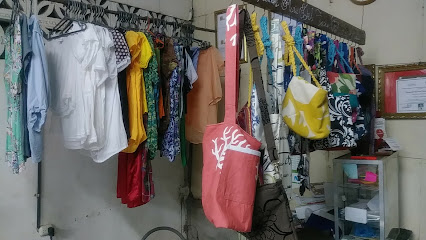
Pulperia LA familiar
Explore Pulperia LA Familiar in Masaya for a unique blend of local culture, authentic products, and delicious traditional foods.

Pulpería El Norteño
Discover the flavors of Nicaragua at Pulpería El Norteño, a vibrant supermarket offering fresh produce, local snacks, and authentic culinary experiences.

Enlil boutique
Explore Enlil Boutique in Managua for unique fashion finds and a personalized shopping experience, reflecting the essence of Nicaraguan style.

BIKINIS OUTLET
Bikinis Outlet in Nindirí is your ultimate destination for stylish beachwear, offering a wide range of swimwear to suit every taste and occasion.
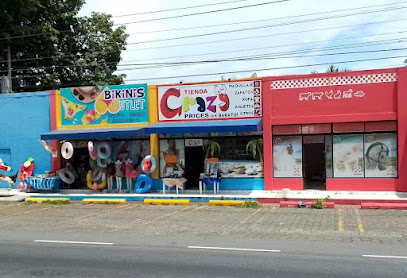
Quick Stop
Explore Quick Stop in Nindirí for a diverse range of groceries, beauty supplies, and unique local products in a vibrant supermarket atmosphere.

Style's Bazaar
Explore the vibrant world of accessories at Style's Bazaar, a unique fashion destination in Masaya showcasing local craftsmanship and contemporary designs.

Essential bars & hidden hideouts
Hangover Wings and Beer
Experience vibrant nightlife with delicious wings and a great selection of beers at Hangover Wings and Beer in Masaya.

Bar La Ceiba
Experience the vibrant nightlife of Nindirí at Bar La Ceiba, where great drinks and a friendly atmosphere await every visitor.
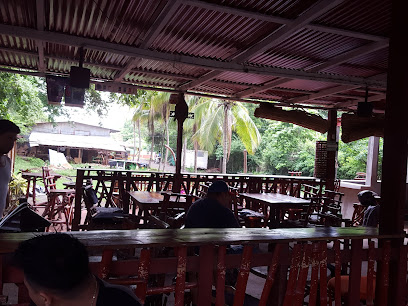
bistros bar
Discover the vibrant nightlife at Bistros Bar in Masaya, where local flavors and friendly ambiance come together for an unforgettable evening.

Alaya Bar&Lounge
Experience the vibrant nightlife at Alaya Bar & Lounge, a trendy bar in Masaya offering delicious cocktails and a lively atmosphere.

Bonsai Bar & Longe
Discover the relaxing ambiance of Bonsai Bar & Lounge in Masaya, where refreshing drinks and local culture blend seamlessly for an unforgettable experience.
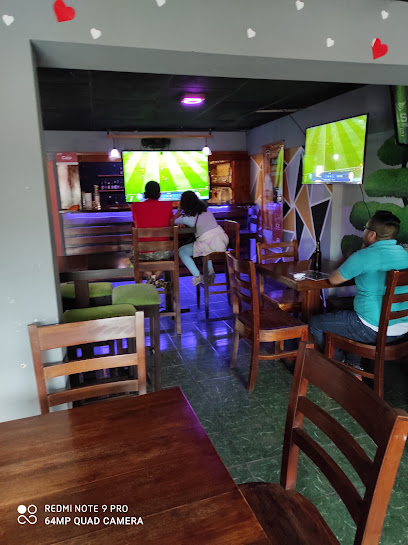
LIQUOR´S BAR SIGLO XXl
Discover LIQUOR´S BAR SIGLO XXl in Nindirí - a lively bar with an extensive drink menu and vibrant atmosphere perfect for unwinding.

Mystic Bar Lounge Masaya
Savor the vibrant culinary scene at Mystic Bar Lounge, a grill in Masaya offering delicious grilled dishes and refreshing drinks in a lively atmosphere.

Bar cadejos
Experience the vibrant nightlife of Masaya at Bar Cadejos – a cultural hub of local flavors, live music, and unforgettable memories.
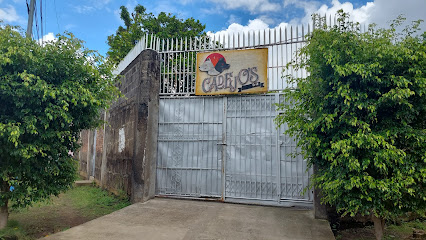
El Atico Rock Bar
Discover the vibrant nightlife at El Atico Rock Bar in Masaya, where great music and local culture come alive in an energetic atmosphere.

Eco's Lounge Bar
Experience the vibrant nightlife and local charm at Eco's Lounge Bar in Masaya, where great drinks and good vibes await every visitor.
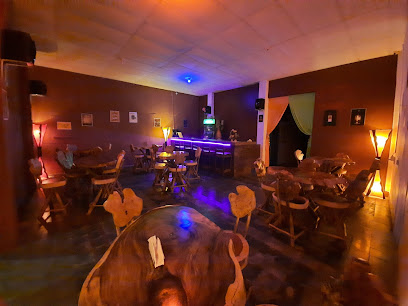
Antigua Corona De Oro Bar
Experience the vibrant nightlife of Masaya at Antigua Corona De Oro Bar, where locals and tourists gather to enjoy refreshing drinks and live music.

DRINK HOUSE BAR
Experience the vibrant nightlife of Masaya at Drink House Bar, where refreshing drinks and local culture meet in a lively atmosphere.

Martin's Bar
Discover the lively atmosphere and local flavors at Martin's Bar, a must-visit destination for tourists in Masaya, Nicaragua.

Nueva Guinea Nicaragua
Experience the vibrant nightlife and rich culture of Nueva Guinea, Nicaragua, a charming bar perfect for relaxation and socializing.

Ponkitos Cocktail
Experience the vibrant atmosphere and refreshing cocktails at Ponkitos Cocktail, a must-visit bar in the heart of Masaya, Nicaragua.

Local Phrases about Masaya Volcano
-
- HelloHola
[oh-lah] - GoodbyeAdiós
[ah-dee-ohs] - YesSí
[see] - NoNo
[noh] - Please/You're welcomePor favor/De nada
[pohr fah-bohr/deh nah-dah] - Thank youGracias
[grah-see-ahs] - Excuse me/SorryDisculpe/Lo siento
[dees-kool-peh/loh syen-toh] - How are you?¿Cómo estás?
[koh-moh ehs-tahs] - Fine. And you?Bien. ¿Y tú?
[byen. ee too] - Do you speak English?¿Hablas inglés?
[ah-blahs een-glehs] - I don't understandNo entiendo
[noh ehn-tyen-doh]
- HelloHola
-
- I'd like to see the menu, pleaseQuisiera ver el menú, por favor
[kee-syeh-rah behr ehl meh-noo, pohr fah-bohr] - I don't eat meatNo como carne
[noh koh-moh kahr-neh] - Cheers!¡Salud!
[sah-lood] - I would like to pay, pleaseMe gustaría pagar, por favor
[meh goos-tah-ree-ah pah-gahr, pohr fah-bohr]
- I'd like to see the menu, pleaseQuisiera ver el menú, por favor
-
- Help!¡Ayuda!
[ah-yoo-dah] - Go away!¡Vete!
[veh-teh] - Call the Police!¡Llama a la policía!
[yah-mah ah lah poh-lee-see-ah] - Call a doctor!¡Llama a un doctor!
[yah-mah ah oon dohk-tohr] - I'm lostEstoy perdido
[ehs-toy pehr-dee-doh] - I'm illEstoy enfermo
[ehs-toy ehn-fehr-moh]
- Help!¡Ayuda!
-
- I'd like to buy...Quisiera comprar...
[kee-syeh-rah kohm-prahr] - I'm just lookingSolo estoy mirando
[soh-loh ehs-toy meer-ahn-doh] - How much is it?¿Cuánto cuesta?
[kwahn-toh kwehs-tah] - That's too expensiveEsto es demasiado caro
[ehs-toh ehs deh-mah-syah-doh kah-roh] - Can you lower the price?¿Puede bajar el precio?
[pweh-deh bah-hahr ehl pree-syoh]
- I'd like to buy...Quisiera comprar...
-
- What time is it?¿Qué hora es?
[keh o-rah ehs] - It's one o'clockEs la una
[ehs lah oo-nah] - Half past (10)Son las diez y media
[sohn lahs dyehs ee myeh-dyah] - MorningMañana
[mah-nyah-nah] - AfternoonTarde
[tahr-deh] - EveningNoche
[noh-cheh] - YesterdayAyer
[ah-yehr] - TodayHoy
[oy] - TomorrowMañana
[mah-nyah-nah] - 1Uno
[oo-noh] - 2Dos
[dohs] - 3Tres
[trehs] - 4Cuatro
[kwah-troh] - 5Cinco
[seen-koh] - 6Seis
[says] - 7Siete
[syeh-teh] - 8Ocho
[oh-choh] - 9Nueve
[nweh-veh] - 10Diez
[dyehs]
- What time is it?¿Qué hora es?
-
- Where's a/the...?¿Dónde está...?
[dohn-deh ehs-tah] - What's the address?¿Cuál es la dirección?
[kwahl ehs lah dee-rehk-syohn] - Can you show me (on the map)?¿Puede mostrarme (en el mapa)?
[pweh-deh mohs-trar-meh (ehn ehl mah-pah)] - When's the next (bus)?¿Cuándo es el próximo (autobús)?
[kwan-doh ehs ehl prohk-see-moh (ow-toh-boos)] - A ticket (to ....)Un boleto (a ...)
[oon boh-leh-toh (ah)]
- Where's a/the...?¿Dónde está...?
History of Masaya Volcano
-
Long before the arrival of the Spanish, the indigenous Chorotega and Nicarao peoples considered Masaya Volcano to be a sacred site. They believed the volcano was a gateway to the underworld and frequently made offerings, including human sacrifices, to appease the gods they believed controlled the fiery depths. Archaeological evidence, including petroglyphs and artifacts found in the area, attests to the deep spiritual significance the volcano held for these early cultures.
-
During the early 16th century, Spanish conquistadors arrived in Nicaragua and were both awed and terrified by Masaya Volcano. The Spaniards named the active crater 'La Boca del Infierno' or 'The Mouth of Hell.' In an attempt to exorcise the 'demons' they believed resided within, the Spanish friar Francisco de Bobadilla planted a cross at the crater's edge, known as 'La Cruz de Bobadilla.' This act was intended to Christianize the volcano and its surroundings.
-
After Nicaragua gained independence from Spain in 1821, Masaya Volcano continued to be a significant landmark. In the 20th century, the Nicaraguan government recognized the area's ecological and cultural importance and established the Masaya Volcano National Park in 1979. The park was the first of its kind in Nicaragua and aimed to protect the unique volcanic landscape, flora, and fauna while providing educational and recreational opportunities for visitors.
-
Masaya Volcano is one of the most active volcanoes in Nicaragua, with eruptions recorded as far back as the 16th century. Its persistent activity has made it an important site for scientific study. Researchers from around the world visit Masaya to monitor its behavior and gather data on volcanic activity. Notable eruptions occurred in 1772, when lava flows threatened the town of Nindirí, and more recently in 2016, when increased activity led to the formation of a new lava lake within the Santiago crater.
-
Today, Masaya Volcano remains a vital part of Nicaraguan culture and identity. Local folklore continues to tell tales of the volcano's mystical powers, and the site is a popular destination for both tourists and locals. Festivals and rituals are still held in the vicinity, blending indigenous traditions with modern celebrations. The volcano's imposing presence serves as a reminder of Nicaragua's rich history and the enduring connection between its people and the land.
Masaya Volcano Essentials
-
Masaya Volcano is located approximately 20 kilometers south of Managua, the capital of Nicaragua. The closest airport is Augusto C. Sandino International Airport in Managua. From the airport, you can take a taxi, rental car, or arrange for a private transfer to the volcano. The journey typically takes about 30 to 45 minutes by road. Public buses also operate between Managua and Masaya, but may require additional transfers to reach the national park.
-
Once you arrive at the Masaya Volcano National Park, you can explore the area by car or on foot. The park has well-marked trails and roads leading to various points of interest, including the Santiago Crater. Local taxis are available for transportation within the nearby town of Masaya. For a more immersive experience, consider renting a bicycle to explore the surrounding areas at a leisurely pace.
-
The official currency in Nicaragua is the Nicaraguan Córdoba (NIO). Credit cards are accepted at larger establishments, but it's advisable to carry cash, especially for smaller vendors and in rural areas. ATMs are available in the town of Masaya, but it is recommended to withdraw sufficient cash in Managua before heading to the volcano to ensure you have enough funds for entrance fees, souvenirs, and other expenses.
-
Masaya Volcano is generally a safe destination for tourists, but it's important to take standard precautions. Avoid walking alone at night and keep an eye on your belongings in crowded places. The town of Masaya has some areas with higher crime rates, so it is best to stay in well-populated and well-lit areas. Always stay on marked trails within the national park and follow the guidance of park rangers.
-
In case of emergency, dial 118 for immediate assistance. There are medical facilities in the town of Masaya, and it is recommended to have travel insurance that covers medical emergencies. The national park has its own rangers who can provide assistance in case of an emergency within the park. For minor health issues, there are pharmacies in Masaya where you can purchase over-the-counter medications.
-
Fashion: Do wear comfortable, lightweight clothing suitable for hiking and exploring volcanic areas. Avoid wearing flip-flops or open-toed shoes. Religion: Do respect local customs and traditions. Public Transport: Do be respectful and patient when using public transportation. Don't eat or drink on public buses. Greetings: Do greet people with a friendly 'Hola' or handshake. Eating & Drinking: Do try local dishes and drinks. Don’t refuse food offerings, as it is considered impolite.
-
To experience Masaya Volcano like a local, visit the town of Masaya's markets, especially the Mercado de Artesanías, where you can buy handmade crafts and local goods. Engage with locals, who are often friendly and willing to share stories about the area. Don't miss the night tour of the volcano to see the glowing lava in the Santiago Crater. For a unique experience, visit the nearby Masaya Lagoon, which offers stunning views and opportunities for kayaking.
Nearby Cities to Masaya Volcano
-
Things To Do in Managua
-
Things To Do in Granada
-
Things To Do in Rivas
-
Things To Do in Ometepe
-
Things To Do in San Juan del Sur
-
Things To Do in Jinotega
-
Things To Do in Liberia
-
Things To Do in Playa Flamingo
-
Things To Do in Tamarindo
-
Things To Do in Guanacaste
-
Things To Do in La Fortuna
-
Things To Do in Monteverde
-
Things To Do in Tegucigalpa
-
Things To Do in San Miguel
-
Things To Do in Jaco








